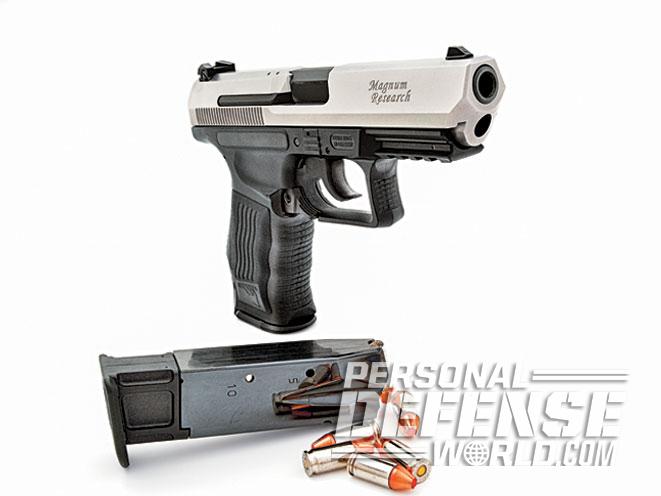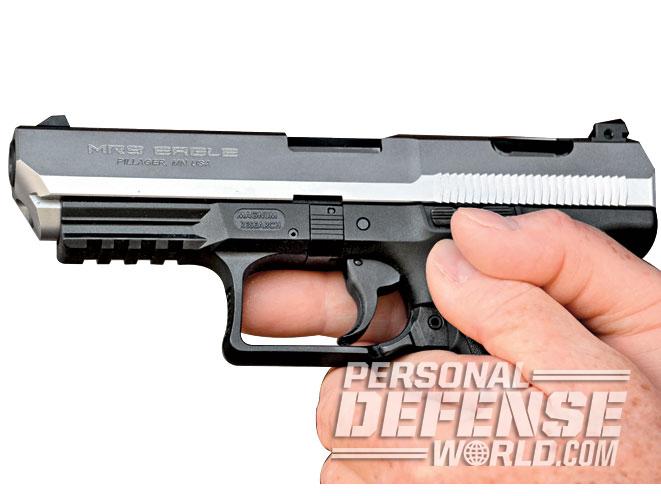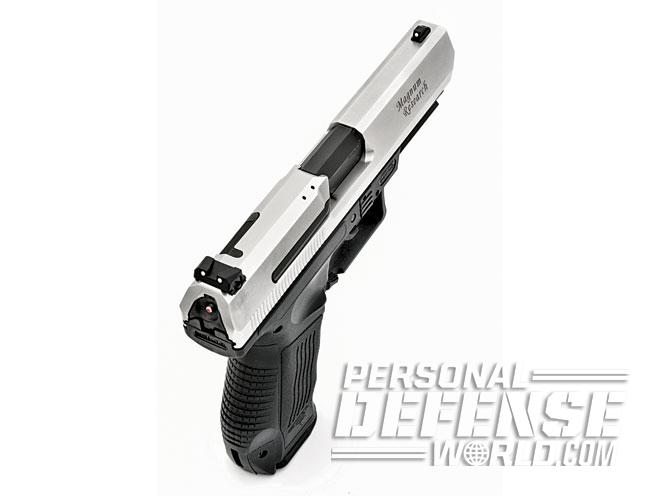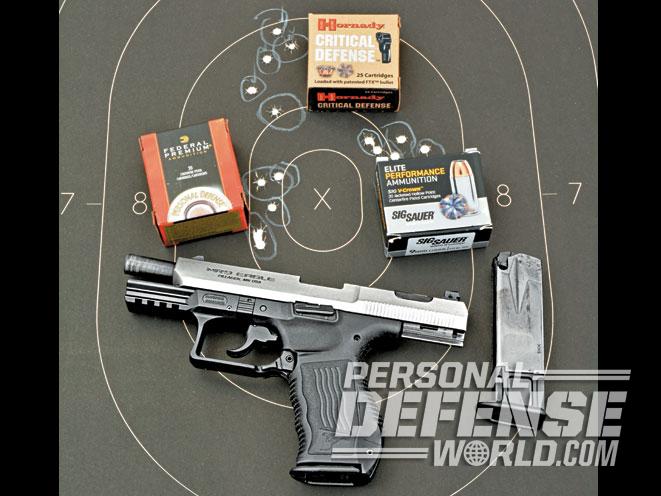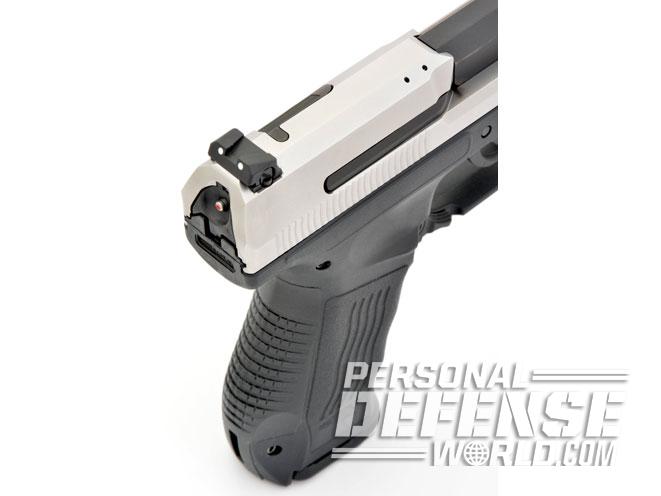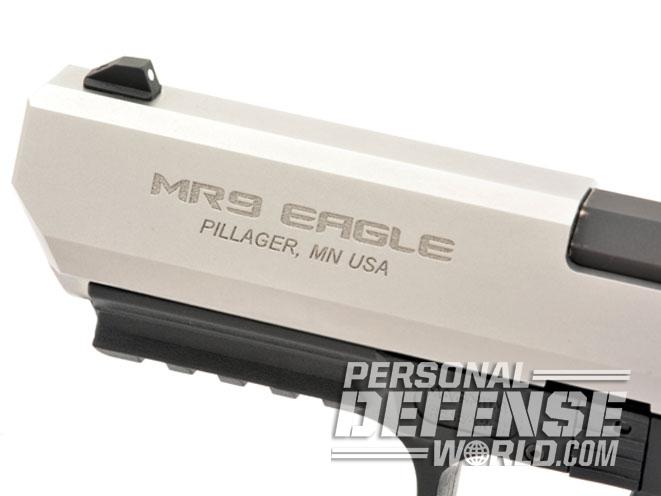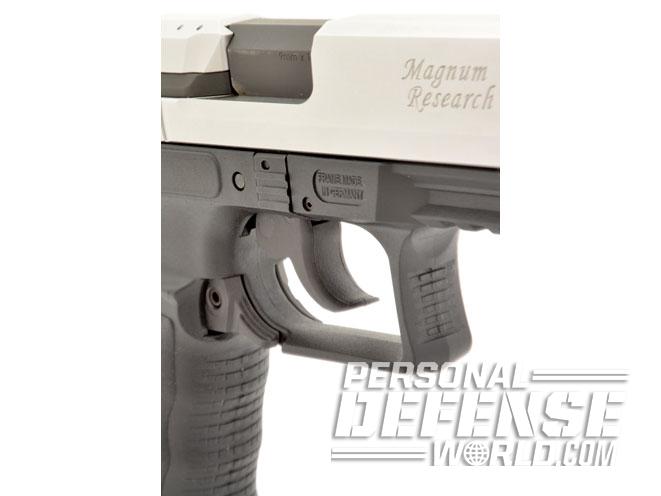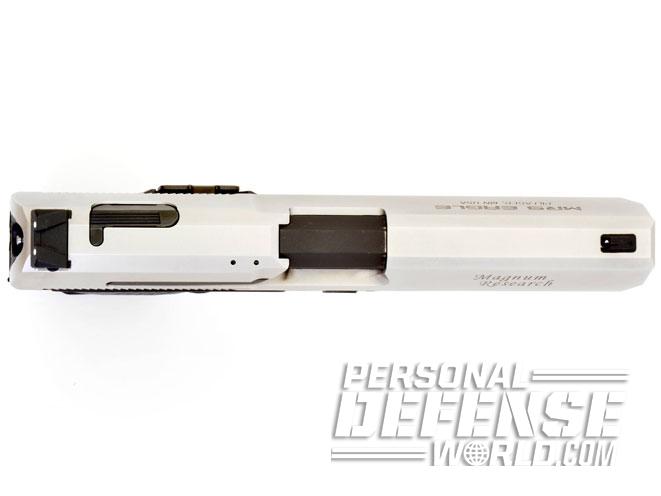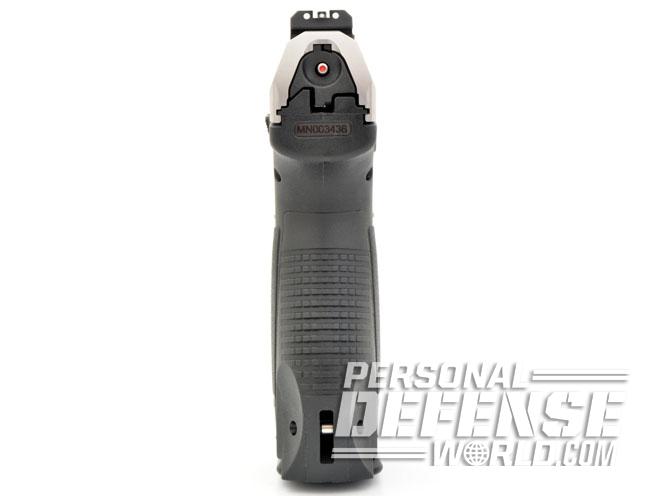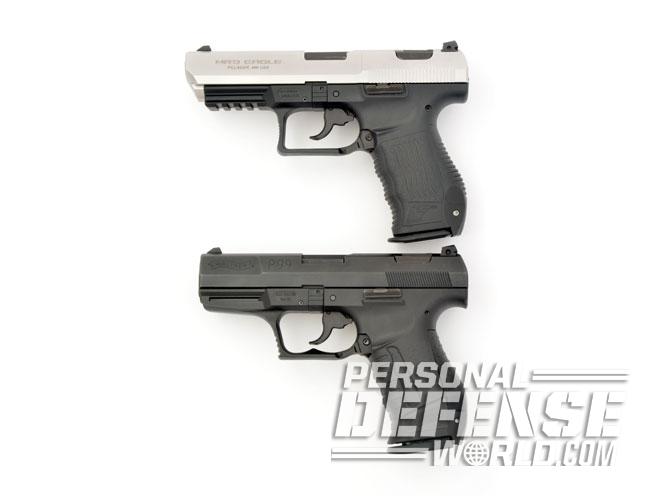I have a long established favoritism for certain handguns. It has been reflected in my personal choice of carry guns, guns that I collect and the way in which I review some “new” models that are based on older, proven designs. I can certainly be objective. That’s what I do. But when certain guns that I regard among the “best of the best” get a makeover, I tend to be highly critical, even when change is not for the sake of change alone.
Case in point is the Walther P99, which remains among my personal favorites and, no matter what other opinions are out there, ranks in my mind as one of the very best, if not the best, 9mm semi-auto pistols ever developed. I also stand by its original design and function, including the ambidextrous triggerguard magazine release.
When asked what handgun I would pick if I could only have one to carry into a combat situation, my answer has been the same since it was introduced almost 20 years ago—a Walther P99. This is a consummate handgun encompassing every feature that makes a semi-automatic desirable: a double-action/single-action (DA/SA) trigger system, ambidextrous magazine releases, second-strike capability, cocked and loaded-chamber indicators, adjustable and dovetailed white-dot sights, extended-capacity magazines and a manual decocker. I look for all of these features, or as many as possible, in a carry gun. The P99 has never disappointed me.
Advertisement — Continue Reading Below
New-Look 9mm

This second version of the MR9 is a Walther P99 in Desert Eagle clothing. The original model was introduced in 2011 as a striker-fired, DA/SA semi-auto with the same physical dimensions, grip contour and ambidextrous magazine release (built into the triggerguard) as the Walther P99. The 2011 model was offered with the latest Walther interchangeable palm swells and adjustable three-dot sighting system. It was produced as a joint American/German venture utilizing the established Walther-manufactured P99 polymer frame, with its integrated steel rails combined with a 416 stainless steel slide and 4140 chromium-molybdenum alloy steel barrel handcrafted in the U.S. by Magnum Research.
RELATED STORY: Big Bore Test – Magnum Research’s Desert Eagle Mark XIX .50 AE
Advertisement — Continue Reading Below
Since their introduction, the guns have been assembled in Minnesota, with Magnum Research using Walther’s polymer frames, each of which is stamped “Frame Made in Germany” on the right and “Magnum Research” on the left. The polymer grip panels also have a distinctive wave pattern and the Desert Eagle logo embossed into the finish. The frontstrap and interchangeable backstraps have deeply checkered stippling.
The MR9 offers the same 15+1 capacity in 9mm and 11+1 in .40 S&W, and it comes in a two-tone finish. All of that remains unchanged on this latest MR9 version. What’s different is the addition of a Desert Eagle slide.

To preserve sanity and space, it is best to start with a clean sheet of paper and forget all previous versions or models known as the Baby Desert Eagle before 2015. The name has been used on multiple guns over the years from various manufacturers. This includes a version of the established CZ 75 SA/DA design sold by Magnum Research (through 2009), as well as variations of that design in full-sized, semi-compact and compact, the later Baby Desert Eagle II variations in three sizes and three calibers, the previous Walther-based MR Eagle models introduced in 2011 and the newly introduced Baby Desert Eagle III, the latest version of the CZ-based Baby Desert Eagle II. The MR9 then is no Baby, as the Walther-based semi-auto uses the word “Eagle” solely to reference the company’s legendary namesake, the Desert Eagle. And this is the simplified explanation!
Advertisement — Continue Reading Below
RELATED STORY: Desert Eagle Defense – Magnum Research’s 1911U & Baby Desert Eagle IIs
From the onset, it was intended that Magnum Research would eventually make the P99-based MR9 a Desert Eagle-style pistol to capitalize on the design’s recognition, and to keep the MR9 from being regarded as an American version of the P99. This required making some minor but noteworthy changes to the gun’s well-recognized exterior. The new MR9 has slightly larger dimensions than the P99, starting with the longer slide and that distinctive Desert Eagle muzzle, a 0.48-inch-longer barrel and an elongated triggerguard. The MR9 measures 7.63 inches in overall length, 5.3 inches in height and 1.3 inches in maximum width. With a barrel length of 4.5 inches and a longer slide, the MR9 weighs in at 24.8 ounces unloaded. Compared to a P99, it is 2 ounces heavier and 0.41 inches longer. The width and height remain the same.
Covert Striker
Advertisement — Continue Reading Below
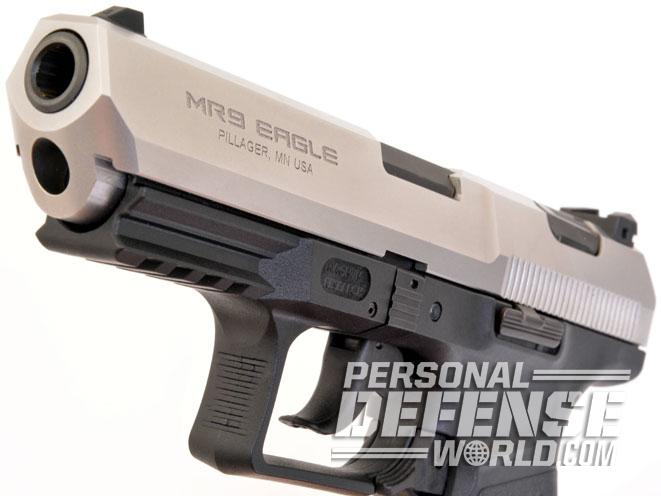
Internally, the MR9 shares the same striker-fired system that utilizes a traditional short-recoil, locked-breech design with a modified Browning locking system. I am particularly fond of the P99/MR9 trigger system and its modes of operation. This is one of the gun’s truly distinguishing features. The gun can be carried with a chambered round and the action manually decocted.
When the striker is cocked, the MR9 incorporates two self-engaging, interlocking safety systems. First is an internal striker/firing-pin drop plunger block, and second is an internal trigger safety to prevent discharge unless the trigger is completely pulled to the rear.
Advertisement — Continue Reading Below
When drawing the gun, the operator has two options. First is a long DA trigger pull that averaged 8.4 pounds. After the first round is discharged, the pistol becomes an SA and the trigger pull is reduced to just a 5-pound average. However, if the pistol has a chambered round and the trigger is fully forward (as in loading a fresh magazine), the trigger can be staged with a short take-up to SA position with an almost effortless 0.75-inch pull. This can be clearly felt. You can, of course, pull right through and fire, but staging the trigger for an aimed first shot and a consistent 5-pound pull makes it a more precise first shot.
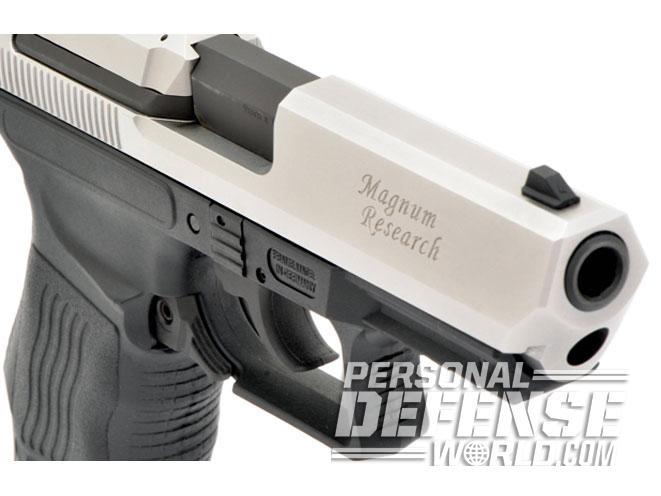
Once the trigger is staged the remaining travel is 0.5 inches, and it remains so for each successive shot. If you do not take the shot, the gun can be manually decocked and returned to safe condition one, requiring a full DA trigger pull to reset the striker and discharge the pistol. And if time permits, you can also pull the slide back a mere 0.25 inches and reset the striker.
Advertisement — Continue Reading Below
When the striker is fully cocked, it protrudes through the back of the slide and has a red dot at its center. If the red dot’s not there, the action isn’t cycled. You can also feel the back of the striker in the dark or to check if the action is cycled before drawing. When a round is chambered the back of the extractor tilts inward and a red indicator is exposed. This is about as accommodating a firing system as anyone could ask for, and it’s all part of the P99 design.
RELATED STORY: Magnum Research Introduces New Pistols & Rifles For 2015 | VIDEO
What Magnum Research brings to the table is the slide, barrel and exterior modifications. Of the latter are the elongated triggerguard and a longer, four-slot Picatinny rail on the dust cover. While both eliminate the use of most P99 holsters, the triggerguard is more than amply sized for use with gloves, and the longer rail provides more room for light/laser combinations than a Walther. And, of course, a barrel nearly half an inch longer increases accuracy while the overall slide length extends the sight radius. In terms of capacity, all Walther magazines (and extended-capacity magazines for the P99) are interchangeable, as are all Walther P99 accessories.
Advertisement — Continue Reading Below
Like the P99, field-stripping is equally quick. Release the magazine, clear the gun, pull the trigger and then push the slide back far enough to pull down the dual disassembly releases (in the frame just forward of the trigger). The slide then pulls forward off the frame. It takes less time to do than it does to describe it. Reassembly is just as efficient. In build quality, the MR9 is just as ruggedly constructed and reliable as a Walther P99.
Soaring At The Range

On the test range, all of the various operating features quickly begin to shine. The ambidextrous magazine release built into the rear edges of the triggerguard are easy to operate. All it takes is a simple downward push with the trigger finger or thumb; they have become intuitive for me after having owned a first-edition P99 for 15 years.
Advertisement — Continue Reading Below
There is no magazine disconnect with the MR9, so it will fire a chambered round without the magazine inserted. I regard this as a definite plus. The slide release is large and surrounded by a beveled rim molded into the frame’s contour to avoid inadvertent contact when firing the gun, yet it is easy to operate on the reload. The pistol has an oversized extractor and a lowered ejection port to keep the lead flying downrange and empty cases in the air.
RELATED STORY: Easy Disassembly of the MRI Desert Eagle Mark XIX
The white-dot rear sight is adjustable for windage and the MR9 comes with six interchangeable white-dot front sights of various heights, so the gun can be fine-tuned to specific ammunition and POA at predetermined ranges. The standard backstrap will fill most hands, and there are two interchangeable panels suitable for smaller or larger hands, or for when the operator is wearing gloves.
Compared to the P99, the MR9 actually has slightly better balance in the hand. The slide serrations on the MR9 are longer and offer a more solid purchase when racking the slide. In all other respects, the pistol feels and operates exactly the same as the Walther. My test pistol came with two reduced-capacity, 10-round magazines that are available as an option.

Test ammo choices were all personal defense loads. These included Hornady’s Critical Defense 115-grain FTX, Federal’s Premium Personal Defense 124 grain Hydra-Shok JHP and Sig Sauer’s Elite Performance V-Crown 124-grain JHP. From the MR9’s 4.5-inch barrel, velocities were 1,190 feet per second (fps) with Hornady, 1,083 fps with Federal while Sig clocked a 1,117 fps average.
Recoil with all three brands of ammo was brisk but very manageable, and sight reacquisition with the white-dot sights was seamless. The accuracy was consistent with all types of ammo, and the gun experienced zero failures to fire, load or eject spent shells.
In fact, the test was over almost too soon as the gun functioned flawlessly and groups were very consistent. The best five-round group measured 1.52 inches with Sig Sauer, with a best three-round spread at 0.75 inches. Hornady measured 1.98 inches with a best three at 1 inch, while Federal placed five at 2 inches with a trio grouping at 1 inch.
Overall, for a new gun right out of the box, it performed perfectly. With practice, I can see this pistol consistently producing 1.5-inch groups at 15 yards while fired off-hand. These results are consistent with what I have averaged with my P99 over the past 15 years.
The Takeaway

In my estimation, the P99 has always had superb handling characteristics, excellent balance in the hand, ease of use and exhibited consistent accuracy. The Magnum Research MR9 has all of this, and it is no longer a P99 doppelganger but a darn nice variation that can stand on its own. When asked what handgun I would pick if I could only have one to carry into a combat situation, my answer now would be a Walther P99 or an MR9.
